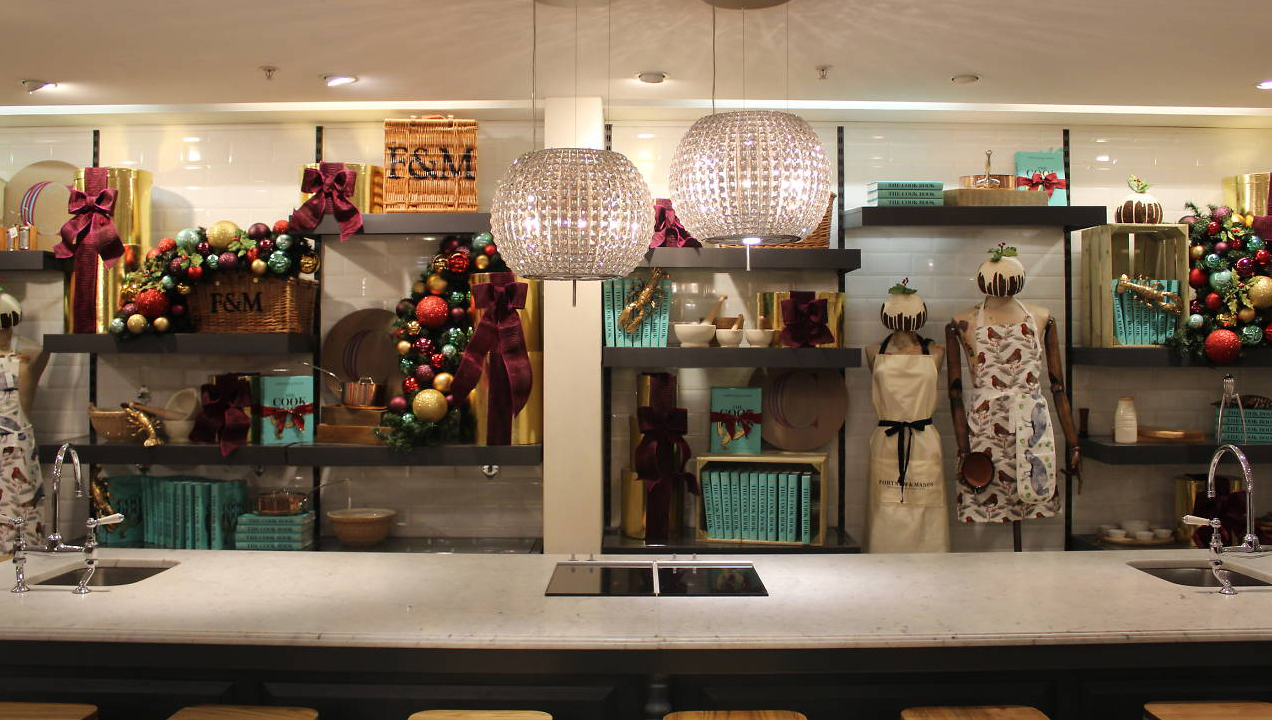5 Digital Transformations Coming to a Store Near You (Part 2)
Part 2: A tale of two concepts
In part one of this white paper, we explored three ways digital technology has transformed traditional retail operations like checkouts, models like recommended retail pricing, and how online services are now developing into blended combinations of digital services and in-store experiences. These three areas of digital transformation are changing mechanics and operations of retail commerce, but in this paper we’re going to break out two concepts where digital technologies are changing the way we think about ‘the shop’ itself.
If that sounds like a grand statement, let’s take a moment to consider how digital technologies have transformed many of the traditional concepts in other areas of our lives. For example, there was a time when, if you wanted to chat with someone remotely, you used a telephone. It had a dial (no screen) and was attached to your house by a cable. These days, most chats are with our thumbs, text based, via apps and social media. Similarly, if you wanted to play Candy Crush on your phone, you actually had to crush candy on your telephone.
We used to work nine-to-five, we used to send letters and postcards to share holiday snaps or let people know our status. And lunch was something you ate, never photographed. And if for some bizarre reason you did photograph it and develop the picture at the chemist shop, you didn’t show everyone you’ve ever met, workmates and strangers saying “nom-nom”. Most people had to watch TV at set times to see their favorite shows, or record them on bulky, expensive VHS cassettes, sometimes accidentally recording over their wedding video or whatever. The point is, our lives have transformed, almost without our knowing it.
We take our digital lives, social media, ecommerce, email, Skype, phones that play movies, streaming media and all kinds of innovations for granted without acknowledging how in the bigger picture, our daily habits and behaviors have been transformed by technology. So when we look at the way retail shops are changing, it’s easy to focus on the processes as opposed to thinking about the bigger conceptual changes.
A store, after all, is a sort of hub for a community that shares interests and often have similar lifestyles, needs and behaviors. Similarly, in the same way the old butcher, baker and greengrocer merged into the omnipresent supermarket (and then re-emerged in the high street as organic, halal, whole foods and dozens of other variants) we’re now seeing the evolution of what a store contains, and how it can connect with us at home through it’s digital footprint. We’re seeing shops used as venues, or diversifying their in-store concessions to merge lifestyle businesses like gyms and restaurants with products and services in new and innovative ways.
Here are two ways that digital technologies are transforming the concept of a room with shelves and racks, using our tech-transformed social lives and the efficiencies of digital supply chains, making much more use of the brick-and-mortar on your local high street…
1. Store communities & hyper personalization
This idea isn’t particularly new, high end luxury retail brands have been doing it for years. Jeweler Bulgari hosts horology demonstrations for high end watch clients, department store Liberty hosts regular art exhibitions, and the Queen’s grocer, Fortnum & Mason, runs a program for Christmas entertaining and cupcake decorating. Using a store as a space and building customer communities extends quite naturally into today’s omnichannel world, with so many brands already using social media as a customer service channel. Nordstrom has created its own Reddit username and community, Galleries Lafayette and Selfridges also use social media to engage customers with in-store events and online communities.

Via Timeout
Where this idea becomes really powerful, is when it combines with a customer’s personal shopping history and ideas like variable pricing, creating the next generation of loyalty rewards that don’t just offer generic discounts against how much you spend (like most rewards points schemes) but create personalized offers around customer interests. So, e.g., keen home bakers can attend the invitation-only after hours patisserie demonstration evening, and use their exclusive baking vouchers while they are in store.
For customers who don’t cook, that kind of offer makes no sense, so a digital system that can tell the difference between customer interests (shopping histories) and recognize opportunities to build customer communities (home baking fans) is key to making store community/hyper personalized shopping experiences work. We should expect all retailers to begin engaging like-minded consumers together using digital channels, and connecting these groups together in shopping experiences based at local brick-and-mortar locations.
2. Converging verticals
One of the UK’s most successful department stores – at a time when the old department store is an endangered species – is London’s Selfridges. This store features many brick-and-mortar innovations, like placing their clean eating Hemsley +Hemsley restaurant in their Body Studio (health spa) and putting hair, nails and eyebrow bars in amongst their ground floor cosmetics concessions, and putting children’s craft tables in the toy department. Exploring these shopping-lifestyle connections as a business model has been digitally supercharged by the world’s largest digital marketplace player, Alibaba, with their Hema Fresh experiment in Shanghai.
The Hema model combines four business models in one: It’s a supermarket; it uses the store as a warehouse for fresh food (sold direct to customers and delivered to homes); it is a tea house style restaurant (where the food on sale supplies the kitchens); it also sells semi-prepared foods (fresh prepared meals for home consumption) for pick-up and delivery. This blending of wholesaler warehouse, food retail and catering is serviced (like Amazon Go) with frictionless payment apps, and self-scan apps, Alipay and so on. What it represents is probably the future shape of brick-and-mortar retail, combining previously separate verticals and businesses into one location, to multiply the return on investment per square meter of floor space.
Where it’s really clever, is it means there’s a much clearer analytical picture of how the catering businesses consumes produce, how home consumers buy fresh and prepared food, and how the warehouse side needs to adapt to fit with the needs of its commercial clients (caterers and retail) and their home delivery customers. This enables greater efficiency and simplifies the supply chain and logistics, which means better margins and reduced costs.
A blended retail future built around communities
The digital transformations we’ve discussed here (and in part one of this paper) are all enabled by technology, but it’s the human factor, the need for real-world physical experiences, that is driving them. The end of queues, more active clubs and communities, a different price for everyone, and smarter ways to combine steps on the supply chain together to increase profits, these ideas can only work with digital technologies, analytics, and human-centric design to ensure each innovation improves customer journeys.
When everything had a stick-on price tag and everyone paid with cash and checks, where every customer was forgotten when they left the store (until they came back in) and orders had to be made in writing or over the telephone, there were physical limits on how flexible brick-and-mortar retail could be. Today, with a smartphone in every shoppers’ pocket, a social media ID an email address, the future of physical retailing is becoming a whole lot brighter that the doom and gloom high street news stories of recent years suggest.
And for a human-centric design practice like Sutherland Labs this is great news… because who doesn’t love a trip to shops?
